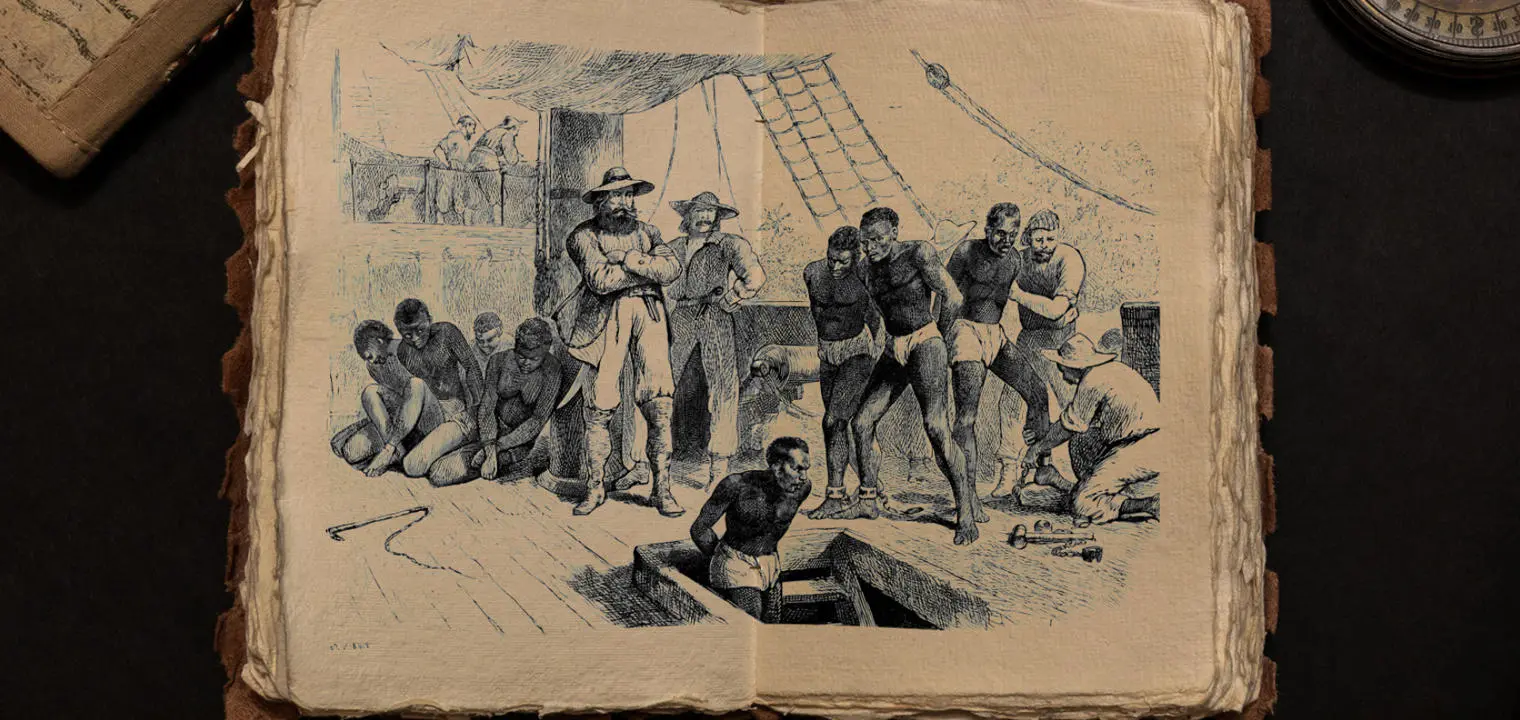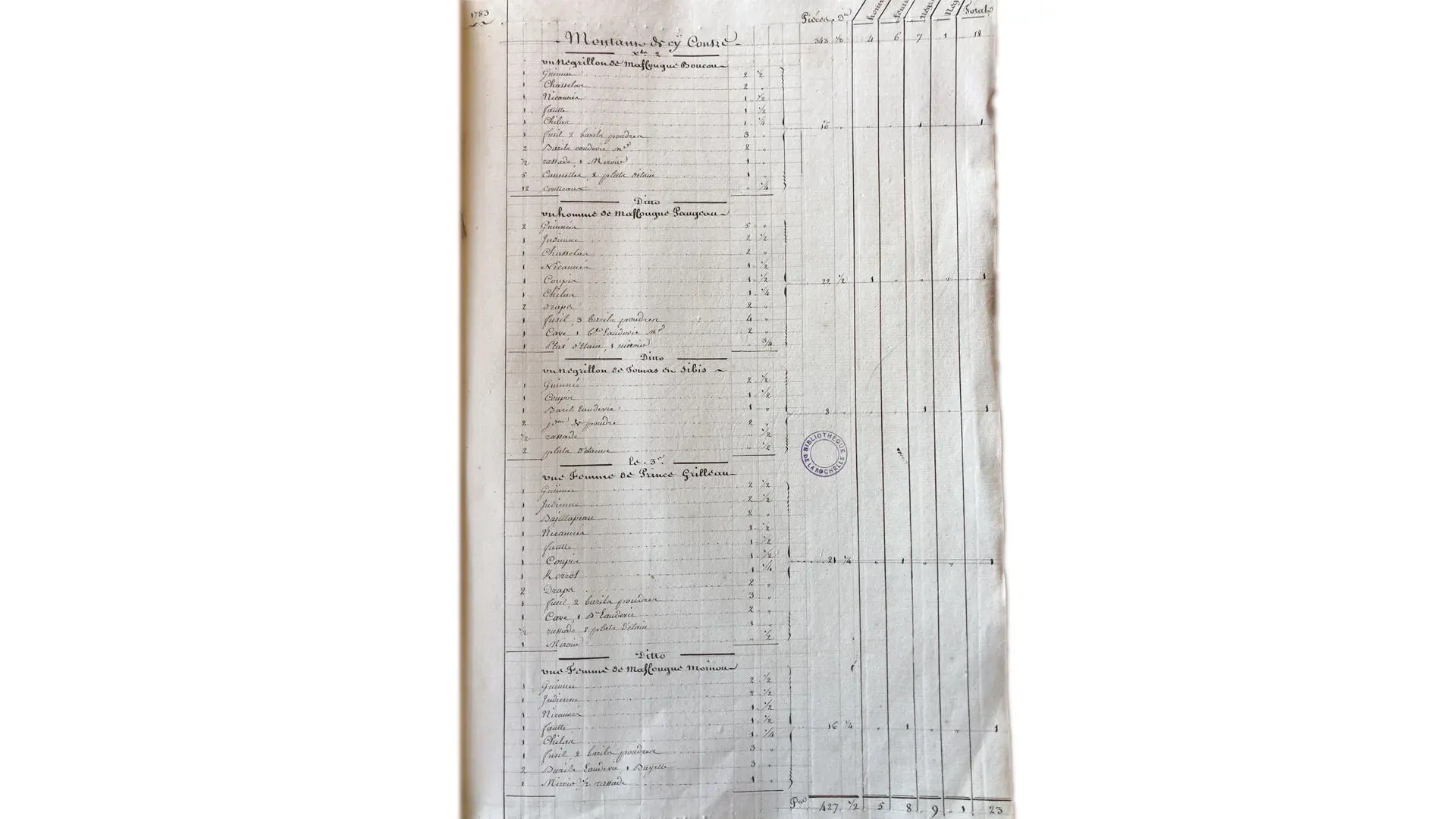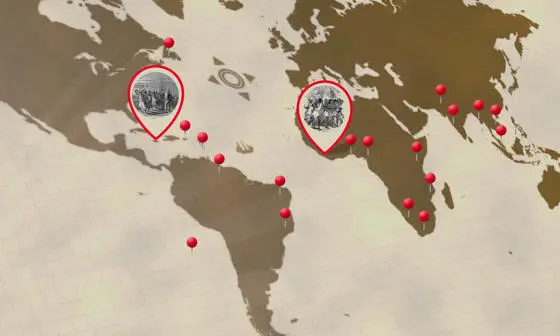Uncovering the economics of a slave ship

Contents
Over the course of four centuries, an estimated 12.5 million enslaved people were shipped from Africa across the Atlantic to be sold for labour. But while the slave trade is understood to be a shameful period of human history, little is known about how it worked.
Research by Dr Anne Ruderman of LSE’s Department of Economic History and Dr Amanda Gregg, of Middlebury College, has uncovered previously unknown details about how the trade operated "on the ground", including the market pressures in play as prices were negotiated.
Dr Ruderman and Dr Gregg focus on the experiences of the French-owned slave ship theBonne Société as it traded in the port town of Loango, West Central Africa, from November 1783 to May 1784. Their analysis reveals that time was a key factor in influencing negotiations, with the captain willing to pay higher "prices" – captives were not purchased for hard currencies but instead traded for bundles of goods containing a variety of products, including textiles, weapons, alcohol and metals – the longer the ship was in harbour.
Revolt and disease are essentially contagion models. So, the captain is willing to pay a premium to leave, and to leave quickly.
The project is the result of a "lucky find" of documents uncovered during an archival search. These contained instructions from the ship’s owners, paperwork on the ship and letters from the captain. The documents also included the ship’s trading log, listing every purchase, the name of the seller, the contents of the bundle paid, and the price that bundle corresponded to.
"The log contains an extraordinary level of detail," says Dr Ruderman. "I also have letters from the captain and instructions from the ship’s outfitters - so I know their intent and can trace what actually happened; I have some insight into what the captain thought as the trade progressed; and I have this incredibly rich trading log, so I can track how the trade operated day to day. Having these three vantage points is unique. You don’t usually get that for a single ship, and this has allowed me to reconstruct what was happening in an original way."
Sold for a bundle of goods

Typical to ships trading at this time, the Bonne Société remained in harbour, purchasing people either individually or in small groups, until it had bought enough to continue its journey to the Caribbean.
Analysis revealed that people were not sold for a fixed price. Instead, bundles increased in size and worth as the ship’s time in harbour increased, with enslavedpeople purchased in April/May 1784 costing the captain nearly twiceas much as those bought at the start of his visit in November 1783. Time, therefore, was a key pressure in determining prices.
"The cost to the captain for staying in port is much more expensive later in the trade," explains Dr Ruderman. "It's much more expensive to feed 300 people than it is to feed 10 people. And risks like disease and revolt grow."
Captain David’s letters show that the ship did, in fact, experience a revolt in April 1784, with 12 drowning after a number of men jumped overboard with their leg irons on. "Revolt and disease are essentially contagion models," continues Dr Ruderman. "So the captain is willing to pay a premium to leave, and to leave quickly."
This massive, forced migration of enslaved people happened through literally millions of individual transactions.
Sellers, buyers and the hierarchies of a slave trading port
The documents also reveal much about the merchants in Loango selling to the ship and how the trade operated at port. Of these sellers, some are found to be "one-shot traders" while others returned for repeat business. Having first painstakingly studied primary sources and literature to establish who held status in society and who were simply traders, in all, a total of 119 individuals are identified as having traded with David during his sixmonths in port.
"If you had asked me before I did this project how many merchants I thought were selling slaves to the ship, I would have said somewhere between 15 and 25. I would have never guessed 119 different merchants," says Dr Ruderman.
"This means the slave trade is really, really widespread at this port. It is not controlled by just a few key merchants - there are a lot of people in the log who just trade with the ship once. In other words, this massive, forced migration of enslaved people happened through literally millions of individual transactions."
When it comes to negotiations, however, a seller’s status appears to have no impact on the prices they could command. "This doesn’t mean that there wasn’t a social hierarchy in port," cautions Dr Ruderman. "It’s likely that those with status benefitted from customs payments that ships had to make in order to open the trade. But the trade itself appears to be a 100 per cent market economy."
Never forget that this is a person
While Dr Ruderman and Dr Gregg’s work develops our understanding about the market economics of the transatlantic slave trade, Dr Ruderman is keen to stress that this was no simple dispassionate economic analysis.
"It’s really important to remember what the data represents," she says. "Each sale is about an enslaved woman - or man, boy or girl - who is enduring something really, really horrible.
"I think that one of my jobs is to make sure that the person doesn’t get lost. Every enslaved person was an individual, who would have had family and friends and certain talents and fears. Each captive was a unique person. It's really important to remember that."
Dr Anne Ruderman was speaking to Jess Winterstein, Deputy Head of Media Relations at LSE.
Trading log image printed with permission of the Médiathèque d’agglomération de La Rochelle.
Banner image: "Slave ship" by Allen Gathman is licensed under CC BY-SA 2.0.
Download a PDF version of this article




